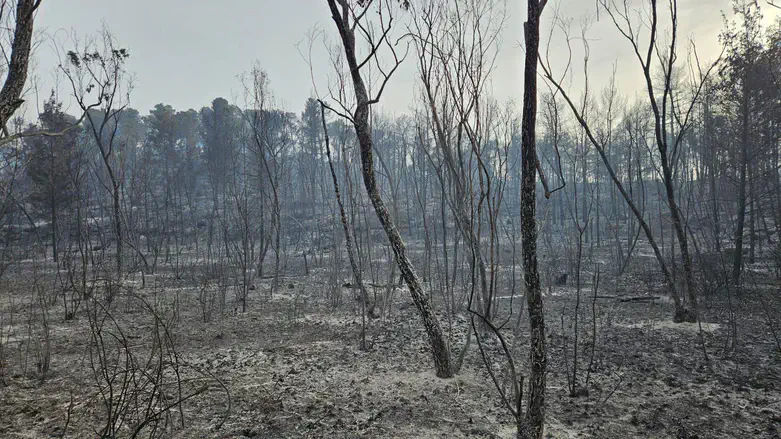
Earlier this month, as Israelis prepared to mourn their fallen on Memorial Day, a chilling new threat erupted across the nation—not from rockets or infiltrations, but from fire. Massive wildfires broke out almost simultaneously in over 20 locations between Eshtaol and Latrun, engulfing forests, homes, and infrastructure west of Jerusalem. Roads were shut down. Communities were evacuated. Lives were turned upside down in a matter of hours.
What many initially feared might be natural turned out to be something far more sinister: deliberate ecological terror.
Authorities moved swiftly, confirming multiple arrests, including suspects from East Jerusalem neighborhoods like Umm Tuba. They were caught with incendiary tools—cotton, lighters, and other materials ready to burn. Police say there’s no doubt: the fires were intentionally set. A map circulated by security officials showed nearly all fire points on the Israeli side of the Green Line, not in Palestinian Authority territories.
It was a surgical act of internal sabotage timed for maximum emotional and psychological damage. As if to leave no doubt, Hamas had already issued a chilling online call to action days earlier, urging Palestinians to “burn whatever you can—groves, forests, settler homes, and cars.”
Firefighters battled not only the flames but the unusually violent behavior of the blaze. These were not typical wildfires. The fire raced across tree canopies, leaping long distances, spreading fast and unpredictably due to extreme heat and 100 km/h winds. Experts described this behavior as unprecedented in Israel’s fire history. The country had seen large fires before, like the Carmel disaster in 2010, but this was different. This was weaponized weather, mixed with ideology and hatred.
National Security Minister Itamar Ben Gvir called it a national emergency. Highway 1, the artery between Tel Aviv and Jerusalem, was engulfed in smoke, forcing drivers to abandon their cars and flee on foot. Entire villages were emptied. Schools and nursing homes were evacuated. United Hatzalah reported volunteers running through empty cars to ensure no one had been left behind, a haunting reminder of the chaos of the October 7 attacks. The smoke, the flames, the mass panic—it all carried the weight of national trauma, reignited.
By the time the flames reached the tank museum in Latrun, itself a memorial to Israeli military sacrifice, the symbolism was complete. This was not just a fire. It was an attack on memory, on nature, on peace of mind. A violation not just of land, but of history.
Over 100 firefighting teams, 10 aircraft, and two helicopters were deployed. Volunteers poured in from every direction, including off-duty special forces from Gaza border units. European allies were asked to send additional firefighting aircraft. But even with global help, the fire remained far from under control for hours. The Israeli fire service shifted tactics from suppression to containment, building defensive lines and evacuating more towns, hoping to save lives, which it did, even as property and nature were consumed.
Hospitals treated dozens for smoke inhalation. Thousands were left displaced or in limbo. National ceremonies were canceled. Memorial Day and Independence Day—two pillars of Israeli identity—were overshadowed by a coordinated environmental assault.
Now, the question facing Israel is chillingly clear: Is this the new face of terrorism? Fires instead of bombs. Forests instead of frontlines. Environmental destruction as psychological warfare. Terror without a gun but with the same attempted outcome—fear, chaos, disruption. This strategy is not new globally. We've seen it hinted at in other conflict zones. But for Israel, this marks a dangerous new chapter. And it must be answered.
The government has already begun discussing policy changes to treat arson as an act of terrorism. Surveillance must extend to forested areas. Intelligence must include environmental threats. Fire prevention must be embedded in national defense. Because in this new war, the match is as deadly as the missile.
This wasn’t just an act of destruction. It was a message—broadcast in smoke. And while the trees will grow back and the homes will be rebuilt, the real fight now is for readiness. For resilience. For recognition that this is no longer just an environmental issue. It’s a national security threat. And next time, the fires might come faster, burn hotter, and leave even less behind.
Israel survived this wave. But if the country doesn’t prepare, the next firestorm could be worse. This was terror by arson, and it will happen again.
Amine Ayoub, a fellow at the Middle East Forum, is a policy analyst and writer based in Morocco. Follow him on X: @amineayoubx